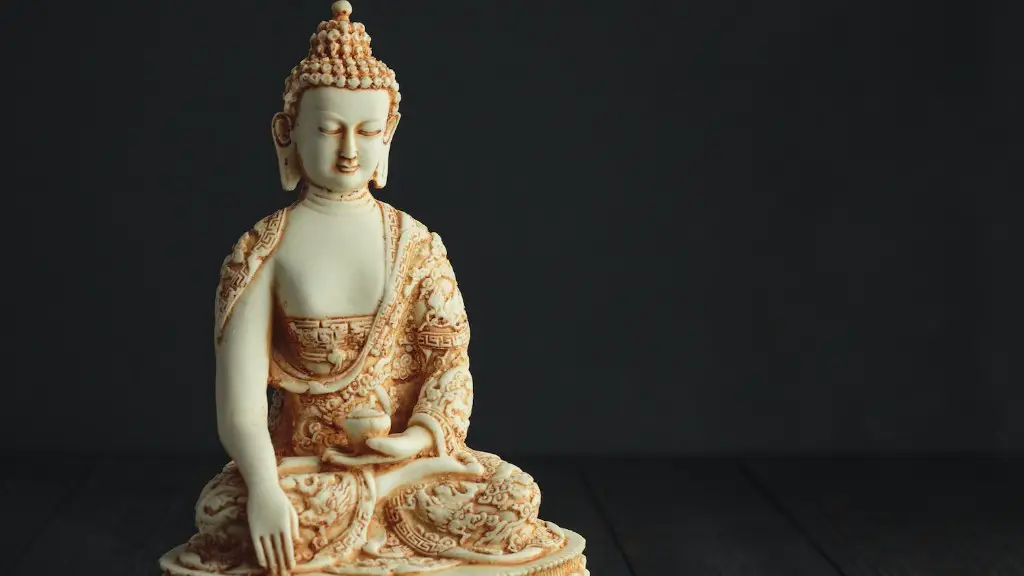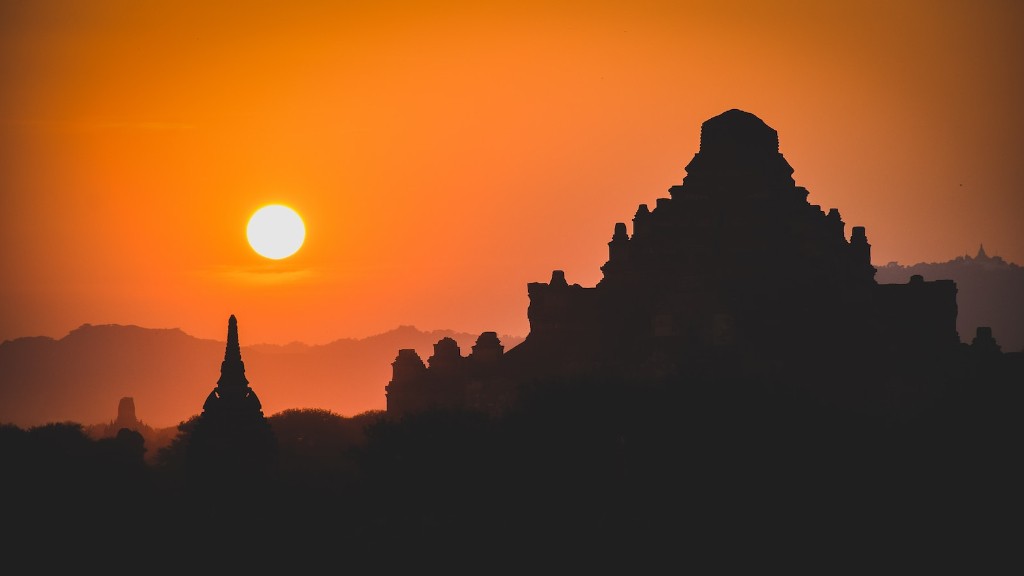Theravada Buddhism is a branch of Buddhism that emphasizes personal spiritual development over ritual or study. Its name comes from the Pali word “thera,” meaning “elder,” and “vada,” meaning “teaching.” Theravada Buddhism is also known as Southern Buddhism or Pali Buddhism. It is the oldest surviving branch of Buddhism and is especially prevalent in Sri Lanka and Southeast Asia. Theravada Buddhists believe that Nirvana can only be attained through one’s own efforts, and that the Buddha is only a human being who has attained Nirvana, not a god.
The Theravada tradition is the oldest of the existing Buddhist schools. It arose in India in the 3rd century BCE and spread to Sri Lanka, Burma, Thailand, Cambodia, and Laos. It is sometimes called “Southern Buddhism” to distinguish it from the other major tradition of Buddhism, Mahayana (“Northern Buddhism”).
What is Theravada Buddhism?
Theravada Buddhism is the older of two major Buddhist traditions that base their philosophies on the sutras, or teachings, of Siddhartha Gautama, better known as the Buddha. Theravada means ”Way of the Elders” in Pali, the original language of these teachings.
The Theravada tradition takes a more individualistic approach to the path of enlightenment than the Mahayana tradition. In Theravada Buddhism, the goal is to achieve nibbana, or liberation from the cycle of rebirth, through one’s own efforts. The Mahayana tradition, on the other hand, emphasizes the importance of bodhisattvas, or enlightened beings, who postpone their own liberation in order to help others achieve enlightenment.
The Theravada tradition is dominant in Sri Lanka, Myanmar, Cambodia, Laos, and Thailand. It is also practiced in Bangladesh, India, and Nepal.
Theravada Buddhism is one of the two main branches of Buddhism, the other being Mahayana Buddhism. Theravada Buddhism is dominant in Sri Lanka, Myanmar, Cambodia, Laos, and Thailand. The main goal of Theravada Buddhism is to attain Nirvana, which is a state of perfect peace and freedom from all suffering. In order to achieve Nirvana, one must follow the Noble Eightfold Path. This path includes right understanding, right thought, right speech, right action, right livelihood, right effort, right mindfulness, and right concentration.
What is the unique about Theravada Buddhism
There are many things that make Theravada Buddhism unique, but one of the most notable is its extreme emphasis on monastic life. In fact, the majority of Theravada practitioners choose a monastic path away from the secular world. This focus on monasticism is often seen as a key differentiator between Theravada and other forms of Buddhism.
The Theravada tradition teaches that developing ethical conduct is a necessary step on the path to awakening, as well as a practice that can improve the quality of one’s life in the meantime. The commitment to the first five precepts is the baseline practice of ethical behavior in this tradition.
What is the difference between Theravada and Mahayana Buddhism?
Theravada Buddhism is focused on the individual’s journey to break the cycle of Samsara and achieve Nirvana. In contrast, Mahayana Buddhism emphasises the Buddha’s teachings on compassion and altruism, and the bodhisattva’s path of staying in Samsara to help others achieve enlightenment.
Theravada Buddhism is the older and the more conservative of the two main divisions of Buddhism. It is often referred to as the ‘traditions of the elders’. Many Theravada Buddhists follow the teachings of the Buddha exactly, and many of them are monks or nuns. Theravada Buddhists strive to be arhats.
What are the three main characteristics of Theravada Buddhism?
The Theravada school of Buddhism is one of the two major schools of Buddhism. It took root in Sri Lanka and Southeast Asia and its major characteristics include the importance of Pali Canon of scripture and commentary; the veneration of the historical Shakyamuni Buddha; and the spiritual model of the arahat, or “worthy ones” who have attained nirvana.
Theravada, also known as “Hinayana” or “the lesser vehicle”, is the dominant form of Buddhism in countries such as Sri Lanka, Myanmar, Cambodia, Laos and Thailand. It is based on the Pali Canon, which is the earliest surviving Buddhist scripture. Theravada is the oldest surviving Buddhist school and is considered to be the more conservative of the two major Buddhist traditions (the other being Mahayana). The key difference between Theravada and Mahayana is that Theravada focuses on individual salvation, whereas Mahayana emphasises the possibility of Buddhahood for all beings.
What is the highest goal of a Theravada
The Theravada tradition holds that nirvana, or the liberation from cycles of rebirth, is the highest aim. This tradition emphasizes personal liberation through one’s own efforts, rather than relying on external factors such as grace or intervention. followers of this tradition often live in monasteries or solo, in order to focus on their own spiritual development.
As Robin Kornman explains, the view on prayer is different from school to school. Theravada Buddhists tend to pray, but not with the expectation that anyone is listening. Mahayana and tantric Buddhists pray to buddhas and bodhisattvas.
Why is it called Theravada Buddhism?
The Theravada tradition is the oldest surviving Buddhist tradition and is prevalent in Sri Lanka and Southeast Asia. This tradition is characterized by its strict adherence to the original teachings and rules of monastic discipline expounded by the Buddha. The Theravada tradition within Thailand is composed of many different strands and types of monasteries.
Buddhism is a religion that teaches the importance of moral values, ethical conduct, and meditation. It is the official religion of Sri Lanka, Myanmar and Cambodia, and the dominant religion in Laos and Thailand. In India, Buddhism is practiced by minorities in India, Bangladesh, China, Nepal, North Korea and Vietnam.
Where is Theravada Buddhism practiced
The largest branch of Buddhism is Theravada Buddhism which is mostly concentrated in Southeast Asian countries such as Thailand, Myanmar, Sri Lanka, Laos, and Cambodia. This branch generally follow the more traditional and orthodox version of the Buddhism teachings. In recent years, however, Theravada Buddhism has begun to spread to other parts of the world, including North America and Europe.
The Four Noble Truths are some of the most important teachings in Buddhism. They state that suffering exists, that there is a cause of suffering, that there is an end to suffering, and that there is a path to the end of suffering. These truths are important because they provide a foundation for the rest of Buddhist teachings and practice. They also show us that suffering is not inevitable or permanent, and that there is a way to end it.
What influenced Theravada Buddhism?
The main three ways that Theravada Buddhism was transported into Southeast Asia was through systems of trade, marriage, and missionary work. Trade routes provided the perfect opportunity for monks and missionaries to travel and share the Buddhist teachings with others. Marriage alliances between royal families also helped to spread the religion, as rulers who married Buddhist princesses often converted to the faith. And finally, the establishment of monkhoods and monasteries provided a physical presence for the religion in new areas, allowing for Buddhist monks to engage in missionary work and share the Dharma with the local population.
The Sangharaja is the highest ranking member of the clergy in many Theravada Buddhist countries and is responsible for the well-being of the religious community. The title is often given to a senior monk who has demonstrated wisdom and leadership qualities, and who is respected by his peers. In some cases, the Sangharaja may also be the head of state, and as such, wields considerable political power.
Who is the god in Theravada
A bodhisattva is a being who is on the path to buddhahood. In Theravada Buddhism, a bodhisattva is someone who is working to become a Buddha. The term bodhisattva is mainly used in reference to the historical Buddha, Siddhartha Gautama, before he attained enlightenment. It is also used in reference to the future Buddha, Maitreya, who is said to currently reside in the Tavatimsa heaven.
Theravada and Mahayana are the two main schools of Buddhism. Theravada is the older of the two, and is the dominant form of Buddhism in South Asia. Mahayana is the dominant form of Buddhism in East Asia.
Final Words
The Theravada tradition is the oldest surviving Buddhist tradition. It is predominantly found in Sri Lanka, Burma, Cambodia, and Thailand.
The Theravada Buddhism is an ancient Buddhist school that upholds the originally teachings of the Buddha. This sect of Buddhism is dominant in Sri Lanka and Southeast Asia. The Theravada Buddhism teaches that Nirvana can only be achieved through one’s own efforts and perfection is only reached after multiple rebirths.


